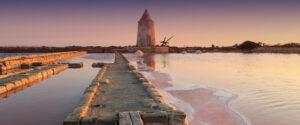A historic and cultural powerhouse, Trapani is one of the most beautiful and best-value provinces to buy real estate in Italy. Whether you’re considering purchasing a Sicilian property as the base for a full-time relocation to the island, a holiday home or an investment in the region’s tourist economy, the island’s western tip is a fabulous place to find off-the-beaten-track bargains and immerse yourself in traditional Sicilian culture.
In this article we will explain what makes Trapani so attractive, introduce you to some of our own team who call it home, and most importantly guide you through the different towns, cities and districts of the province.
If you know which area you’d like to know more about, you can skip ahead now, or keep reading for a general introduction to Trapani.
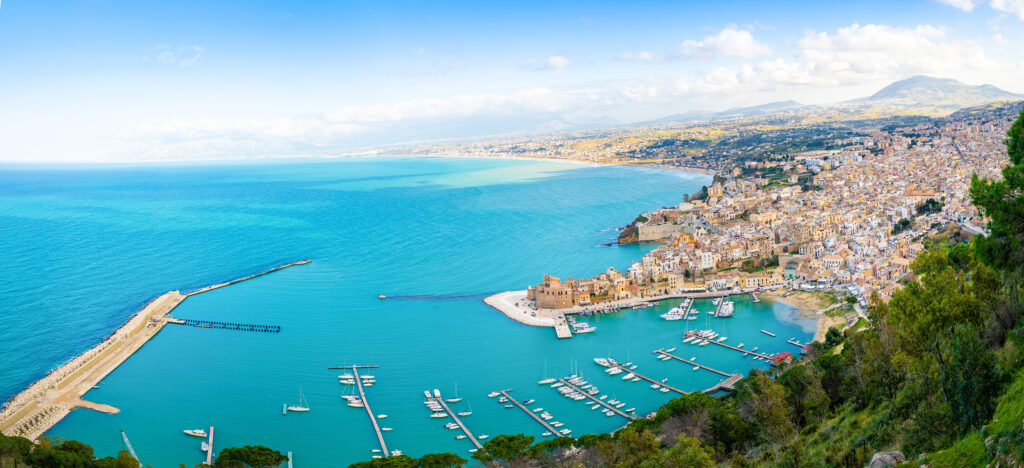
Table of Contents
Where Should I Look for Real Estate in Trapani?
The Sunshine Capital of Italy
It is a region blessed with myriad natural gifts. From the beauty of the Aegadian islands and the pristine beach of San Vito lo Capo, to the man-made monuments created by the traditional industries of salt mining, tuna fishing and wine production, every corner hides a new sensory experience.
For lovers of the summer, the climate is absolutely perfect. Not only is Trapani Italy’s hottest province, it is also one of the sunniest places in Europe, with an average of just 60 cloudy days a year!
This fabulous growing climate and fertile soil helped the province become Italy’s first ever wine-producing region, and to this day a higher percentage of Trapani is covered by vineyards than anywhere else in the country!
Almost Unbeatable Value for Money
Perhaps most enticingly of all, Trapani is the second cheapest province in Sicily to buy property, and the seventh-cheapest in all of Italy. With real estate changing hands at an average price of around €950/m2 in the final months of 2023, only Caltanissetta is a cheaper place to purchase a home in Italy.
We’re going to take you on a tour around the region, with a particular focus on the areas we would recommend most highly to international buyers. We’ll start with its largest and most important city, from which it takes its name.
1. Trapani City and Municipality
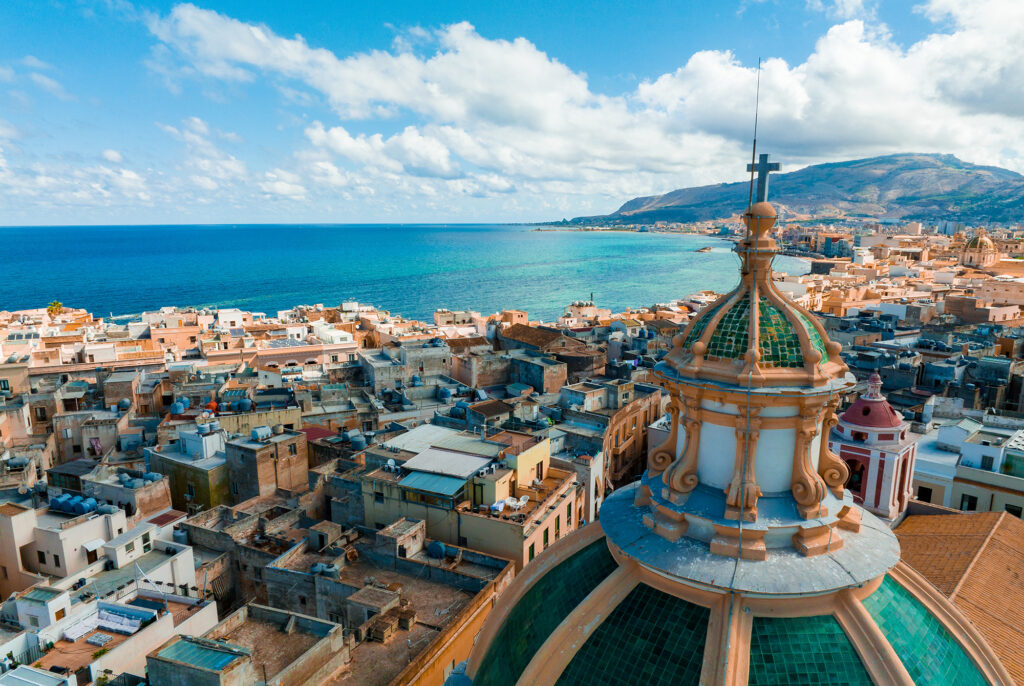
Trapani is a historic merchant city, founded in the late bronze age by the ancient Elymians to serve as the port for their fortress town of Erice, perched 750m above sea level atop the mountain which rises above the town. Today the tide has turned, with Trapani by far the more populous community.
The Greeks later settled the territory, calling it Drepana, which meant ‘sickle’. Legend claimed that a sickle which fell from the hands of the god Saturn (the ancient patron of the town, now commemorated in a famous fountain near the cathedral) became the curved peninsula where the Tyrrhenian and Mediterranean Seas meet. Later the port like so many of the great cities of Sicily, passed through the governing hands of Carthaginians, Romans, Arabs, Normans and Aragonese. A walk through its old town will immediately showcase the various cultural footprints left in the architecture, art and monuments.
Locally, Trapani is known as is the city of salt and wind. Travellers come to see the traditional sea salt flats and windmills. It is also the primary gateway to the Aegadian Islands (Favignana, Levanzo, and Marettimo). These islands are known for their natural beauty, crystal-clear waters, and traditional way of life.
The municipality of Trapani has an even lower average house price than the provincial average, with the typical square metre of home changing hands for just €920 at the end of 2023. A strong tourist interest in the town is reflected in the fact that rental income is higher than average for the province, making it a good candidate for buy-to-let investment.
For international property buyers, a few areas of Trapani will be of particular interest.
The centro storico, or old town, is the final peninsula which protrudes out into the Mediterranean flanked on one side by the port and on the other by the sea wall and urban beach. As you can imagine, this area is steeped in history and can be an exciting place to buy property for renovation. It is a very walkable district, where vehicle access is in fact limited, and the most popular area of the city for tourists, giving all kinds of residential real estate here strong potential as a holiday rental property. Drawbacks to living in such characterful surroundings include the sometimes tricky logistics of keeping a car here and some rather antiquated public infrastructure. Housing in this area is a mix of small apartments and two or three storey terraced houses.
The modern centre begins at via XXX Gennaio, which is flanked by modernist municipal buildings like the police station at one end, and the courthouse at the other. In between lies the elegant park of Villa Regina Margherita, known locally simply as ‘la villa’. Properties in this area will mostly date from the first half of the twentieth century, and you will find some beautiful prestige homes, especially close to the park. By staying close to the arterial Via Giovanni Battista Fardella, you will find some comfortable family apartments in good condition.
At the eastern end of the city the land slopes upwards towards the huge hill topped by the historic town of Erice. Confusingly, this area, which includes the hospital, football stadium, and many of the lidi, or beach bars, is also part of the municipality of Erice, and may show up in real estate searches under the latter name. To differentiate, you can refer to the modern, lower town which connects seamlessly with Trapani as Erice Valle or Erice Casa Santa. Inland this district is residential, but along the coast you can find some modern apartments and large villas. The water is very clean and the beaches are hugely popular in the summer. A cable car takes you up to the old town in about ten minutes of scenic climbing.
Lovers of the sea may want to investigate the coastal area south of the city, around Salina grande and Marausa Lido. Here you will find modern developments of detached holiday homes, many of which have direct access to the sandy beaches of the region. These are also very conveniently located for access to the airport.
2. Marsala, the City of Wine
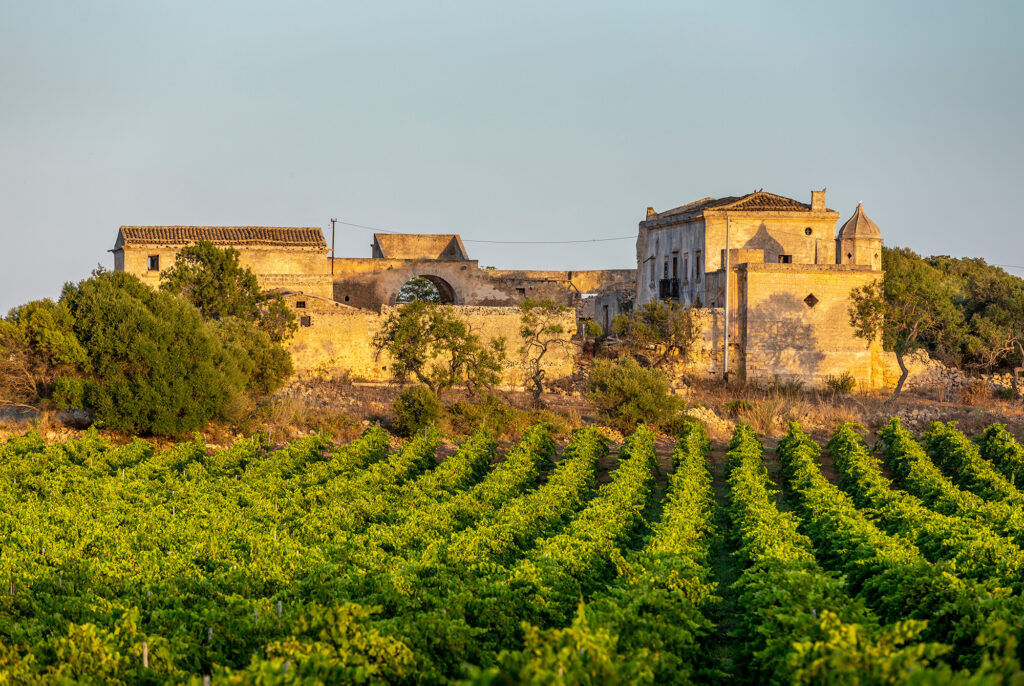
Sicily’s fifth most populous city stands at its western tip. With a name driving from the Arabic Mars el’Allah (‘God’s Harbour’), its blend of cultures and cuisine evokes the Arabian north of Africa as much as the Italian mainland. The city was founded by the Carthaginians in 397BC, and the nearby island of San Panataleo is home to the remains of a Phoenician settlement known locally as Mozia and in the English world as Motya.
Today the word Marsala has become synonymous with the region’s famous fortified wine, popularised by English traders in the late eighteenth century, and there are wonderful vineyards to explore and tour to the east of the city.
Lovers of the outdoors will take delight in exploring the roads, cycle tracks and footpaths which run along the Stagnone lagoon and salt pans, where flocks of flamingos can be spotted. Conditions are perfect for kite surfing.
The old town of Marsala has a similar feel to Trapani, with classical and Baroque architecture, a sand-washed palate, and winding alleyways fresh with sea air. However, it is a slightly cheaper market.
The most prestigious real estate is gathered around the port on the southern side of town, from Porta Garibaldi to the historic cantina of the Donafugata winery, and there are some magnificent villas further out along the coast. Another affluent district is the Contrada Santa Venera, running east towards Niuri and Nuccio. If you are looking for a low-priced restoration project, however, you can find fantastic bargains in the walkable and welcoming old town.
3. Erice and Valderice
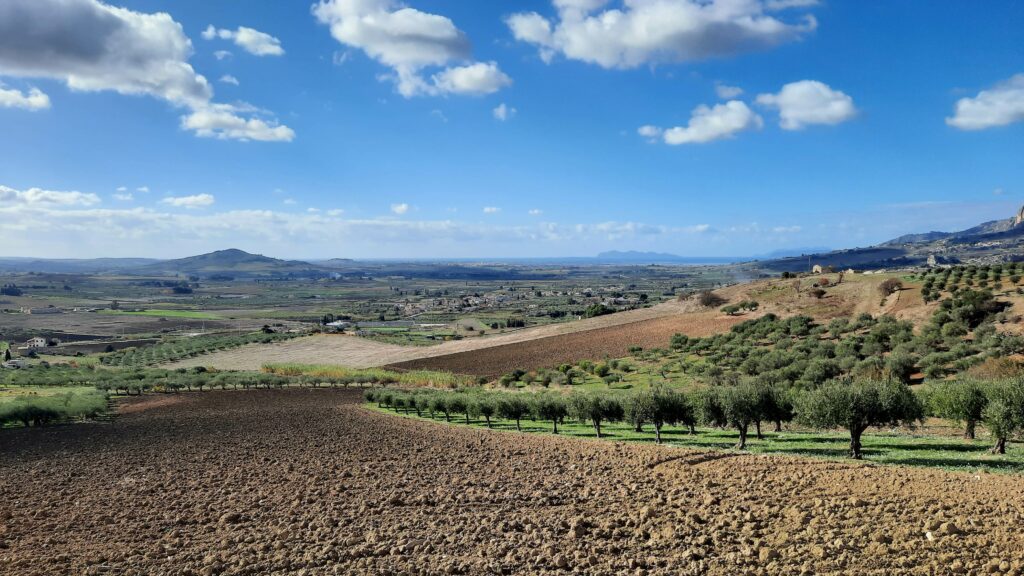
An enchanting medieval town sitting 750 meters above sea level, ancient historians believed that Erice was the oldest surviving city in Europe, with Thucydides suggesting that it was founded by survivors of the sacked city of Troy. The natural defences afforded by the steep hill made it a safe haven for various cultures.
The ancient Temple of Venus was a site of Roman worship, and before that the Greeks prayed here to Aphrodite and the Phoenicians to Astarte. Today’s congregation meets in the Chiesa Madre, built in a blend of Norman and Gothic styles. The Castle of Venus is a dominant feature of the skyline on the northern cliff, offering a stunning panorama of the Tyrrhenian coastline towards San Vito Lo Capo.
The most scenic route to and from Erice is certainly the cable car, which takes you down the mountainside to Trapani below. However, the winding roads which wrap around the outcrop are hardly any the less picturesque.
The narrow streets and alleyways of Erice can make restoration work a challenge, but here Property in Sicily is perfectly positioned to help our buyers with our dependable project management service, and there are some nice mid-range renovated properties to be found. The slopes outside the old town are home to some villas with wonderful views of Trapani and the nearby coast.
Valderice is an adjacent town on the eastern side of the hill, overlooking the fields and hills which lead to the interior of the island, and some homes also have fabulous sea views, taking in both the Tyrrhenian to the north and the Mediterranean to the south. With great transport links and plenty of open space, it is a lovely option for a family home, especially if you value a garden. You can find fairly large detached properties with amenities like swimming pools and large covered terraces in the green districts of Misericordia, Sant’Andrea and Santa Croce.
These first two, in particular, grew up around the turn of the twentieth century as a vacation hotspot for noble families from Trapani – the best example of this is the lovely Villa Elena, also known as Villa Salerno-Barbari
4. San Vito Lo Capo
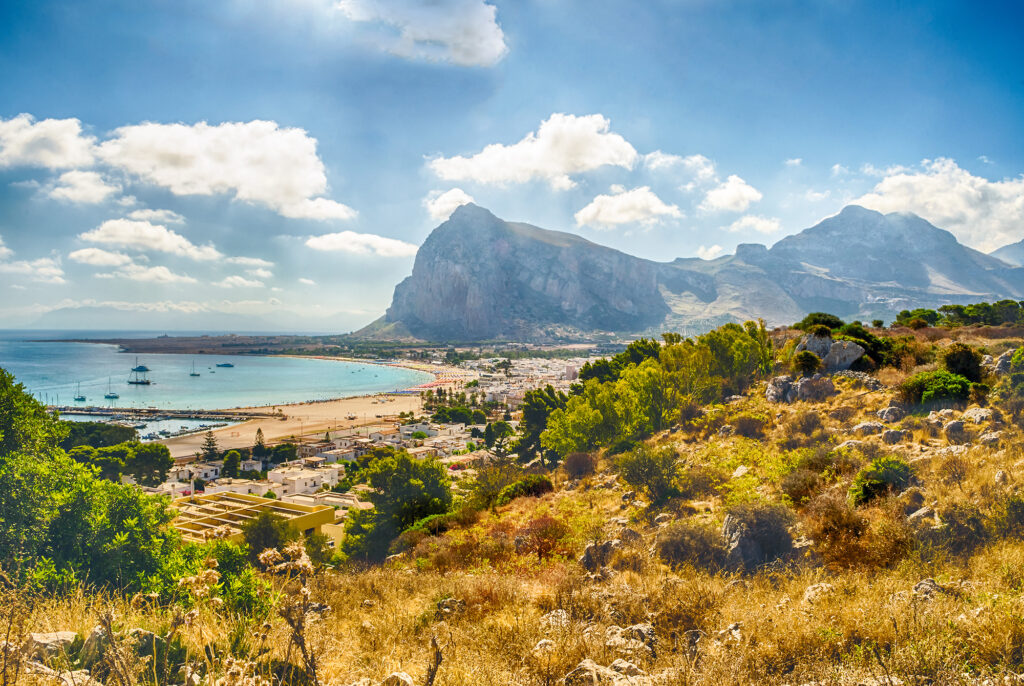
San Vito Lo Capo is a small coastal town in the Trapani province and a top destination for tourists from around the world. What draws them in is simple – a seafront which has more than once been chosen by Tripadvisor as the best beach in Italy. The Caribbean-like strip of white sand that slowly sinks into a crystal-clear sea lies in the shadow of a majestic mountains rising in the background, and not one but two natural reserves guarantee the long-term beauty of the area. It is also home to the nation’s largest couscous festival and international climbing competitions.
A single road runs to San Vito Lo Capo, winding up the stretch of coast north-east of Trapani. This passes through Macari, an affordable alternative to the pricey San Vito which is within easy distance of the town and has some excellent, slightly wilder beaches of its own. The next town is Custonaci, a scenic little town next to the sheltered bay at Cornino. This is a hidden gem, not as popular with international tourists but the site where many city-dwelling locals come to get out of town in the summer. The coastline is highlighted by the mountainous hillside of the Monte Cofano nature reserve.
From here, you can head south to Valderice, or follow the coast along to the friendly little town of Bonagia, famous for its tuna fishery, now converted into a four-star hotel with an excellent restaurant.
The market in San Vito is not cheap – this is the most expensive real estate on Trapani province’s mainland – but you are buying into some blue chip territory, a landmark beach where rental properties return an outstanding dividend in the summer months. When the crowds subside in October and November you will still have some beautiful weather to enjoy this natural marvel. Homes along the coast offer far better value, and you can find some lovely detached beach houses with small gardens for affordable sums.
Our Writer, now Living in Trapani: Sandy King
Sandy is an actor and writer who moved to Sicily in 2018 to run a small theatre company, using performances and workshops to get Italian children inspired by the challenge of learning English. Originally based in Cefalù, he joined the Property in Sicily team in 2019 to provide translation services for our English clients and to help us create this website.
After penning descriptions of properties all over Sicily, Sandy was inspired to jump into the market and buy a place of his own in Trapani in 2023.
“I love the coastline and landscapes of this part of the island, but the real draw for me was that the area is a bit undiscovered by the international market, I think. That meant I could afford to buy here in a way that I couldn’t have done in many cities.
Since I was really young I had a sense in my head of what traditional Italy was like, and this is probably the closest I’ve come to that in a town of this size. You feel like Trapani doesn’t rely on the outside world for culture or tourism. I do know a few friends from outside Italy who live here, but they all have a real interest in the area, they’re more likely to speak Italian and want to fit in a bit. That, to me, makes it a really nice balanced place to call home.”
– Sandy
Sandy hopes that his words can paint a really lifelike picture of what his new home is like. If you do find yourself one day living in the area he’d love to hear what you feel like they prepared you for… and what aspects of life here have come as a surprise!
5. Castellammare del Golfo
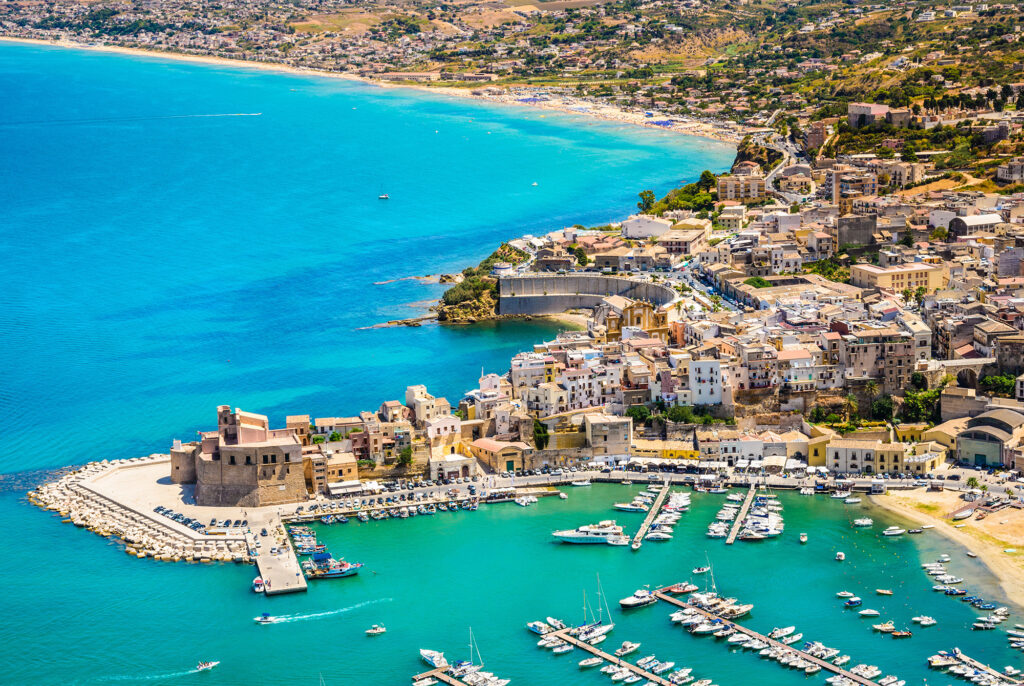
Like San Vito lo Capo, Castellammare del Golfo is another big destination for international tourists, although here the focus is on the town’s heritage and picture-perfect little marina. Nestled in a beautiful gulf along the northern coast of Sicily, this is a charming fishing community with historical roots which can be traced back to antiquity, when it served as the port for the nearby town of Segesta. The steeply-curving hill which leads down to the sea means that space is at a premium, and so you will find small apartments and narrow terraced houses. Prices are rather high by the standards of real estate in Trapani province, but the views can be worth their weight in gold.
Castellammare del Golfo is one of the most photogenic corners of Sicily, and also the gateway to some of its hidden treasures. The small village of Scopello is a holidaymaker’s paradise, with the giant rock pillars known as the ‘faraglioni di Scopello’ emerging from its turquoise waters making it a must-see for visitors to the area. Property in the village rarely changes hands and commands a huge premium, but there is value in the nearby hills around Visicari.
Scopello is the closest you can get by road to the mysterious and beautiful nature reserve knows as Lo Zingaro, Sicily’s largest and perhaps most beautiful. The beaches here, reachable only by foot or boat, are real treasures who reward the intrepid traveller.
6. Mazara del Vallo and the South Coast
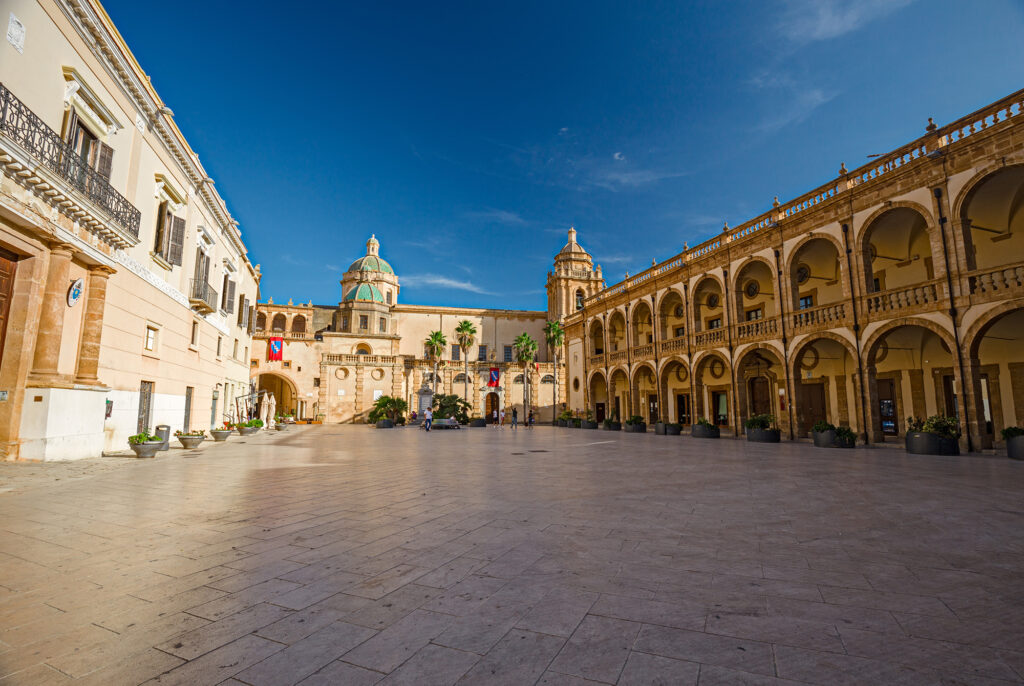
The southern extreme of Trapani province can feel a bit like stepping through some hidden portal back in time, even by the standards of Sicily. The town of Mazara del Vallo is home to some of the most visible Arabian influences on the island, including a Casbah district which is decorated by some beautiful hand-painted tiles and mosaics.
The strip of sea to the south-east of Mazara, running towards the boundary of the province at Porto Palo, is home to some fabulous unspoilt sand dunes. Tre Fontane, Triscina and Marina di Selinunte are gorgeous little holiday communities where you can find more beach to yourself than you would think possible anywhere in Europe. Selinunte itself is home to Europe’s largest archaeological park, a vast tranche of land along the coast.
Supply of real estate here is surprisingly high, thanks largely to its rather remote location, but if the travel time doesn’t put you off you can buy a detached family beach house for under a hundred thousand euros.
7. The Interior of the Province
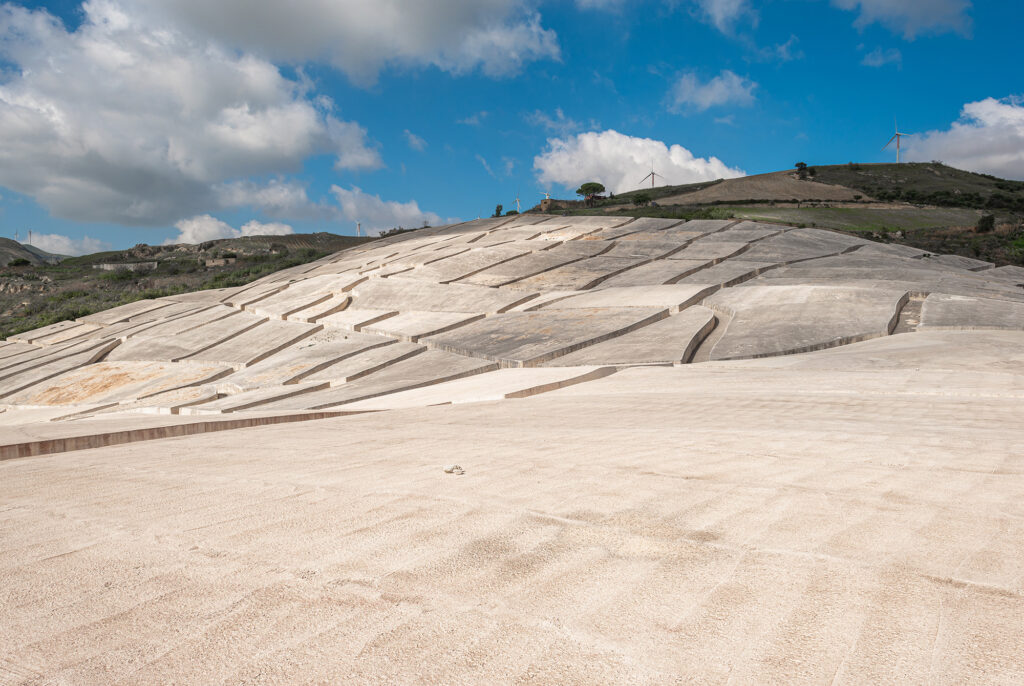
All of the places we have mentioned so far have had in common the wonderful turquoise sea which surrounds us, but this is of course not the only reason to buy real estate in Trapani! Heading inland you can discover ancient architectural wonders like the temple and theatre at Segesta, close to the market town of Alcamo, and modern ones like the Ludovico Quaroni’s remarkable modernist church in Nuova Gibellina.
Salemi is a small town set in rolling hills, which was this year ranked third in a competition to find Italy’s most beautiful village. No small achievement! The charming streets and views of rolling hills reminded us of being in Tuscany.
A little to the south, Castelvetrano is a real surprise! The city is quite remarkably advanced with a modern hospital, American-style shopping, malls, nightlife and more. It is very conveniently located as for the south coast spots mentioned above, meaning that you could buy on the sea and still enjoy all the benefits of this contemporary infrastructure.
Found your own Property? We can Still Help!
As you’ll be coming to understand, the market for real estate in Trapani province is a huge one, with villas, houses and apartments to be discovered across two dozen municipalities. We are constantly working on our carefully curated listings in the area, but you may well find a property before we do.
In this scenario, there are two ways we can help. If you contact us before contacting the other estate agency, we can try to negotiate a mutually beneficial arrangement that will allow us to broker the transaction, guaranteeing you the peace of mind that comes with a multilingual, inter-cultural service. It’s not guaranteed that the other agency will agree, but it never hurts to ask and they very often do!
Alternatively, if you would like a totally impartial opinion from experienced local professionals, then our property report service is for you. This is a scouting report, comprehensive and accompanied by photos and videos, of any property that you’re not able to visit in person. We’ll even check the land registry entries to warn you of any construction that has not been properly certified.
If you’re buying real estate in Trapani, Property in Sicily can be by your side every step of the way.
In Conclusion: Trapani is a Rare Territory of Contrasts, Beauty and History
Just as Phoenicians, Carthaginians, Greeks and Romans discovered in centuries gone by, the province of Trapani is a mystical and elemental land, right at the edge of the European continent and touched by influences from Africa and the whole of the Mediterranean. It will be a first destination in Italy for very few travellers, but if you get to know the country well and want to discover a raw and relatively untouched side of its culture, Trapani may well be perfect for you.
There is no better place in the country to find value for your investment, and few where the combination of nature and civilisation has created a more inspiring backdrop for a new adventure in Sicily. Take a look at our properties in the province now.

